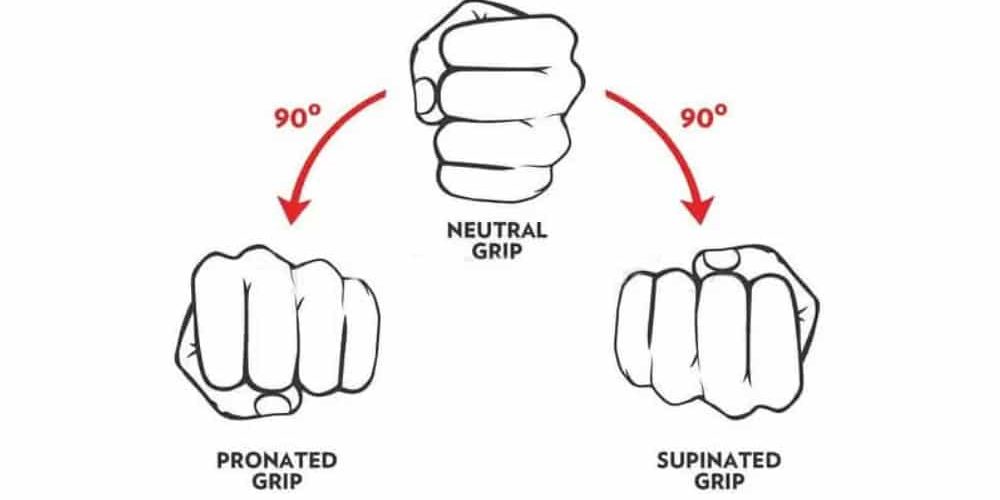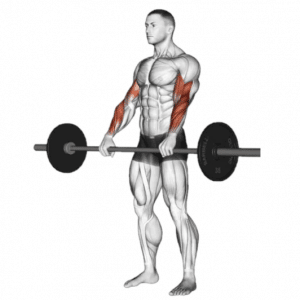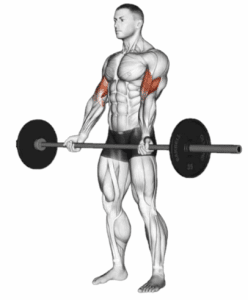During your workouts, you may have noticed that an overhand or underhand grip changes the way the exercise feels. So you might be wondering how this affects the muscles used during those exercises.
How you hold or grip a weight also matters a lot as it can affect the targeted muscles. this article will explain the supination vs. pronation hand positions. And walk you through the best target-specific muscles during your workouts.
Pronated Grip
A pronated hand position is when your palm is facing down, and your palms generally face away from your body. You can use a pronated grip for any exercise; there are no specifications.
However, you might want to use them for more pressing exercises, such as shoulder pressing, chest pressing, or a barbell back squat. For further advantages, a pronated grip plays a major role in safety, as it allows you to steadily grasp and keep it in place so it doesn’t slip off your back.
Supinated Grip
On the opposite side, a supinated hand position is when your palm is facing up. You can use a supinated grip to do specific pulling exercises, such as biceps curls or inverted rows.
Some exercises can be performed with either of the grips, such as pull-ups, pulls down, and bent-over rows. Depending on which grip you use, the exercise will target different muscles.
Pronated Grip Or Supinated Grip
While it might be safer to use pronated grips compared to supinated grips in some specific situations, you should choose the grip that allows you to be comfortable and meets your desired fitness goals.
For a better understanding of the Pronated and Supinated grips, you can find a gym near me.
Here is when to use a pronated or supinated grip.
Pull up
The exact muscles targeted while exercising all depend upon the grip you’re using. If you’re performing a typical pull-up with a pronated grip, you will be engaging more of your back and core muscles and targeting your lats and your rhomboids.
Chin-up
While on the other hand, a chin-up with a supinated grip will activate your pecs and biceps more, according to research. Both exercises can be welcoming additions to your workout routine. So, while choosing between the two grips, you should choose the one according to the muscles you want to work on.
Lat Pull Downs
Using a pronated grip during lat pull-downs tends to engage the latissimus dorsi muscles more than a supinated grip. According to research, the lat muscles help to support good posture and allow you to rotate your arm and shoulder. So, if you want to improve your slouching, using a pronated grip during lat down will help you get closer to your goals.
During Deadlifts
More precisely, using a pronated grip is more effective while powerlifting. You want to be engaging those lats because of how big of a pull the exercise is. If you want to change your grip, then you may not be able to engage them much. Hence, you won’t be able to lift as much.
Once you start lifting heavy weights, the grip of your hand starts to limit its strength. Consider an alternating grip with one hand holding a pronated grip while the other holding supinated. When you use pronated, and your grip strength starts to go, your fingers start to untangle, and you drop the bar. When alternating, it allows you to grasp the bar better, prevents the bar from slipping out of your hands, and allows you to keep lifting the weights.











Comments 0